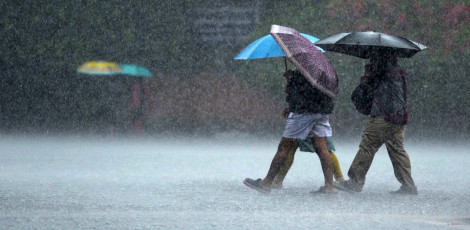TRAI to review broadcast tariff rules
Posted on: 19/Aug/2019 11:42:23 AM

There is a recent trend of the broadcasters offering high discounts whereas offering bouquet has reduced consumer choice.
The Telecom Regulatory Authority of India (TRAI) has also admonished broadcasters and cable operators for misusing the new rules to extract revenue and kill consumer choice.
As such, TRAI has begun a review of the broadcast tariff regime it implemented eight months ago to address complaints from viewers about higher bills and picking the channels they want to watch becoming more difficult.
As observed by experts in the field, the main objective of this review is easing channel choice and this will possibly lead to lower bills.
TRAI also admonished broadcasters and cable operators for misusing the new rules to extract revenue and kill consumer choice.
The Telecom Regulatory Authority of India issued an exhaustive consultation paper on Friday that also raised about 30 questions. It asked whether channel bouquets should be allowed, whether caps on discounts within bouquets offered to consumers should be reintroduced and whether the ceiling price of channels in bouquets should be reexamined.
TRAI has now called out cable operators and DTH providers - together known as distribution platform operators (DPOs) - as well as broadcasters for seeking to squeeze consumers by pricing popular a-la-carte channels higher outside bouquets.
Also, as part of this, channel prices had been changed after TRAI introduced the new rules in December 2018. The sheer number of channel groups is confusing, it said.
TRAI Secretary S. K. Gupta said, �Broadcasters and DPOs are offering a large number of bouquets, which is confusing the subscribers and as such consumer is not able to exercise informed choice. High discounts by broadcasters while offering the bouquet has also reduced consumer choice. This is a clear misuse of the flexibility given to them.�
TRAI argued that these discounted bouquets contain some popular channels but also a number of those that few want to watch, thus driving up overall viewership numbers and thereby revenue.
TRAI observed: �The formation of bouquets (with very few popular channels and others with very low viewership) by broadcasters is not based on consumer demands. It is purely driven by the motive of earning higher revenues at the cost of consumers. Such bouquet formation has the least consideration of consumer choice.� This demonstrated �misuse of flexibility� that had been given to broadcasters while forming and pricing channels, it said.
TRAI further observed that the right of f the consumers to select and pay for only what they want to view still �remains elusive�. TRAI suggested that consumers were being forced to pay high prices for the channels they want to watch because of the manner in which the channels were being grouped.
TRAI Secretary Gupta said, �This new consultation paper is aimed at correcting these anomalies and giving consumer their rightful power of choice�
Comments on this TRAI consultation paper and arguments against them have been sought until September 16 and September 30, respectively.
Last week, TRAI had asked third parties to create apps to help consumers choose their TV channels from any cable or direct-to-home (DTH) provider in response to complaints from consumers that they were unable to opt for channels of their choice.
In this regard, the experts observed that TRAI�s new consultation move may be favourable for viewers, who have been complaining of higher monthly bills since March 2019, when the new tariffs were made effective.
Prabhu Ram, Head of the Intelligence Group at Cybermedia Research observed that while the intent of TRAI�s new regulatory framework was to give freedom to consumers in terms of choice, confusions abounded. The new TRAI consultation paper is a pertinent proposal aimed to benefit consumers, and translating into lower monthly bills.
TRAI, which regulates the cable and broadcasting space besides telecommunications in India asked whether the rules have affected the ability and freedom of subscribers to choose the TV channels they want.
TRAI, apart from asking what other measures can be taken to prevent pushing of unwanted channels to consumers, it has also sought views on whether a cap on discounts in a bouquet should be reintroduced.
It also asked whether there should be a limit to the number of bouquets offered by market, region or operator and whether regulatory provisions should enable discounts in Network Capacity Fees (NCF) - currently at Rs 130 - and distributor retail prices (DRP) for multiple televisions in one home.







